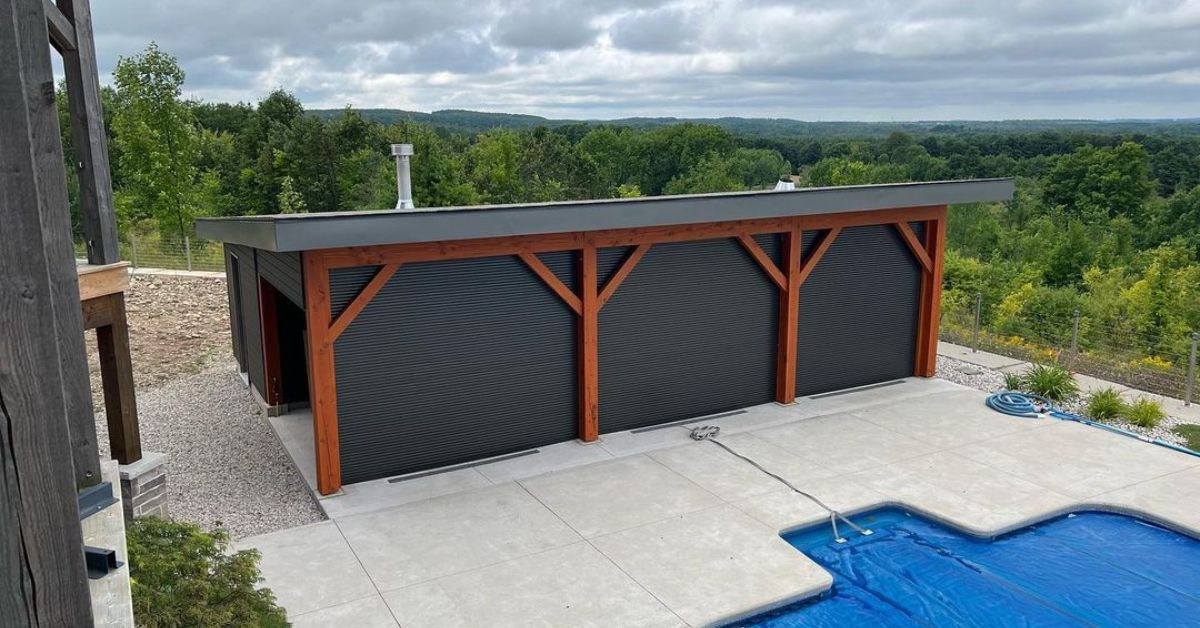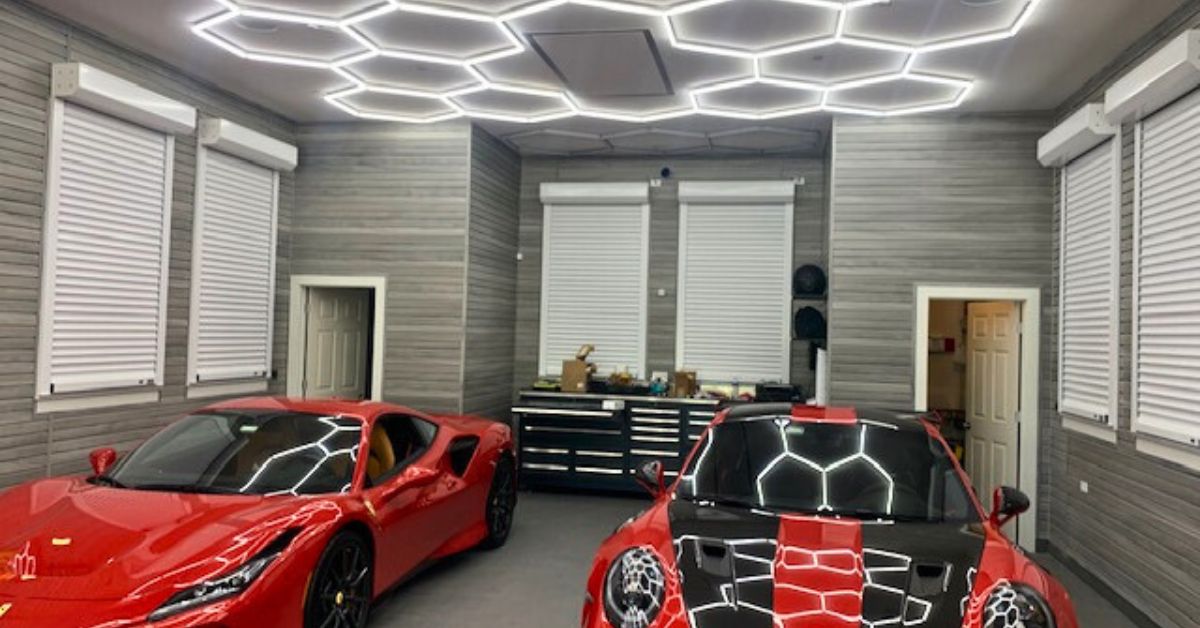Roll-up security shutters and screens have developed over centuries to meet user needs for security, convenience, and aesthetics. From their rudimentary beginnings as simple barriers to their current status as high-tech solutions, roll-up shutters have undergone a remarkable transformation. Explore key milestones in the evolution of roll-up security shutters and screens to see how they have become more effective and easier to use.
Automated Doors in Roman Egypt
Heron of Alexandria, an inventor in Roman Egypt, built the first automated doors in the first century AD. The doors were powered by heat and air pressure, and this system operated temple doors. A person would light a fire at an altar, which would heat and build pressure in a vessel that contained liquid. The steam created pressure that moved the liquid into another container.
The second container hung from the temple ceiling and was connected to the temple door’s doorposts. As the second container filled with the liquid, its weight shifted and pulled the ropes, making the temple doors open on their own.
Heron’s work didn’t just amaze people back then; it also planted seeds for modern inventions. His approach showed how machines could make life easier and set the stage for future breakthroughs in engineering and automation.
Early Wooden Shutters
Early wooden shutters date back hundreds of years, with their origins likely taking root in ancient Greece. They were primarily used in homes and public buildings to protect against weather, provide privacy, and improve ventilation. Made from simple wood panels, these shutters were manually operated and added a layer of basic security by covering window openings.
While wooden shutters were practical for their time, they had notable limitations compared to today’s advanced security shutters. They offered minimal protection against serious threats, could be easily tampered with, and were vulnerable to fire and rot.
Metal and Coiled Springs
The advent of industrial materials such as steel and iron in the 19th century revolutionized the durability and strength of roll-up shutters. This significant upgrade allowed shutters to withstand greater force, making them a more effective deterrent against break-ins. These materials also improved the lifespan and reliability of the shutters, positioning them as a go-to security option for businesses and residential properties alike.
Another key development during this period was the coiled spring mechanism, which streamlined the operation of manual shutters. Instead of laboriously raising or lowering the shutters, users could now enjoy a smoother, more efficient operation.
Aluminum and Coatings
Aluminum became a popular material for rolling shutters due to its lightweight properties, resistance to corrosion, and cost-effectiveness. Compared to heavier metals like steel, aluminum is easier to install and operate, making it ideal for both residential and commercial use. It also withstands harsh weather conditions without rusting like iron and is more affordable than stainless steel while still providing durability. Aluminum combines strength, longevity, and ease of use, making it the preferred choice for modern shutters.
Anti-corrosion coatings were introduced to combat harsh weather conditions and extend the lifespan of these products. These protective coatings became especially valuable for shutters installed in coastal or industrial areas, where exposure to moisture and chemicals poses significant risks.
Mesh Material for Screens
Mesh materials for screens have undergone significant advancements to meet modern demands for durability and functionality. Engineers have developed mesh options that strike the perfect balance between strength and airflow, ensuring long-lasting performance without compromising ventilation. Vinyl-coated polyester reduces wear and tear, making it a valuable material for outdoor screens. Retractable screens from Pentagon Security Shutters can block 45 to 100 percent of UV rays, depending on the curtain textile you choose.
Screen Curtain Openness
Retractable screens also feature an openness rating ranging from 0 to 55 percent, indicating how much light and air can pass through the screen. A 0 percent openness means the screen provides complete privacy and blocks nearly all light and air, making it ideal for maximum UV protection and privacy.
On the other hand, 55 percent openness allows significant light and airflow while still offering some shade, making it suitable for spaces where visibility and ventilation are priorities. The flexibility in openness ratings ensures the screens can adapt to various environments, balancing shade, privacy, and comfort based on your needs.
Quieter Motors
Motors in roll-up security shutters and screens have progressed from basic mechanical devices to powerful, efficient systems. Early motorized mechanisms relied on simple electrical components to automate the raising and lowering of shutters, saving users from manual labor. While these early motors provided convenience, they were often bulky, noisy, and lacked precision.
Modern motors have become significantly more sophisticated, incorporating quieter operation, increased power efficiency, and seamless integration with smart technologies. Innovations in tubular motor designs allow for incredibly smooth and virtually silent movement, enhancing the overall user experience.
Technological Integrations
The mid-20th century marked a turning point with the introduction of motorized roll-up systems. This innovation eliminated the hassle of manual operation, allowing users to open and close shutters and screens with the push of a button. The convenience offered by motorization made these systems increasingly popular in homes and businesses alike.
The integration of remote controls and sensors further enhanced usability, offering smarter, more intuitive functionality. These technological upgrades not only improved convenience but also added an extra layer of safety.
Smart Tech Revolution
The rise of smart technology has taken roll-up security shutters and screens to a whole new level. Integration with smart home systems enables users to control screens and shutters through apps or voice commands, adding unparalleled convenience. Whether you’re at home or away, managing your shutters has never been easier now that smart technologies in play.
Operating Methods for Modern Screens
TranquilGuard retractable screens offer a variety of simple and versatile control options designed to fit your lifestyle. With remote control, mobile apps, and Wi-Fi integration, you can manage your screens effortlessly, no matter where you are. Operate a single screen or a group with single-channel and multi-channel options.
The remotes are intuitive and easy to use, featuring three key buttons for raising, lowering, and pausing screen movement. By pressing a button once, you can seamlessly adjust your screens to your desired position.
The mobile app takes convenience to the next level, letting you control your screens from anywhere, even when you’re away from home. This means you can manage light, shade, and privacy remotely, gaining unparalleled comfort and control at your fingertips.
For those with smart home systems, the Wi-Fi integration capability makes TranquilGuard screens the perfect addition to daily life. This feature allows complete automation, making it possible for your screens to work seamlessly with other smart devices in your home.
The evolution of roll-up security shutters and screens showcases a remarkable journey from basic wooden barriers to sophisticated systems. Advancements in materials such as aluminum and vinyl-coated polyester have greatly improved durability, functionality, and weather resistance. Innovations like motorization, remote controls, and smart home integration have transformed the way we use these systems, making them more convenient and adaptable. Today, roll-up shutters and screens offer unparalleled protection, comfort, and style, reflecting centuries of progress and ingenuity.

